Abstract
1. Experiments have been performed in sheep to determine the contribution of lymph formed within a lymph node to the total protein output in lymph leaving the node. 2. The lymphatic duct leaving the popliteal lymph node was cannulated and the protein and lymphocyte output in efferent lymph determined. The afferent lymph flow to the popliteal node was then diverted and lymph formed only within the lymph node collected from the efferent cannula. It appeared from the results that the popliteal lymph node forms lymph at the rate of approximately 1 ml. per hour and may contribute 30-50% of the protein output observed in efferent lymph. 3. The importance of lymph formation within the lymph node varied between nodes found in different regions of the body. This was due in part to the different protein concentrations in the afferent lymph to the different nodes. 4. A positive correlation was found between the protein and lymphocyte concentrations in efferent lymph from the popliteal lymph node in seven out of eleven sheep and in lymph formed within the popliteal lymph node in two out of three sheep. It is suggested that this relationship may be due to an increased transfer of plasma proteins through the post-capillary venules in the lymph node accompanying the continual traffic of lymphocytes across the wall of these vessels. The results indicated that the protein transfer across the post-capillary venules was not an indiscriminate transfer of plasma per se but a selective transport from the blood plasma compartment based on molecular size.
Full text
PDF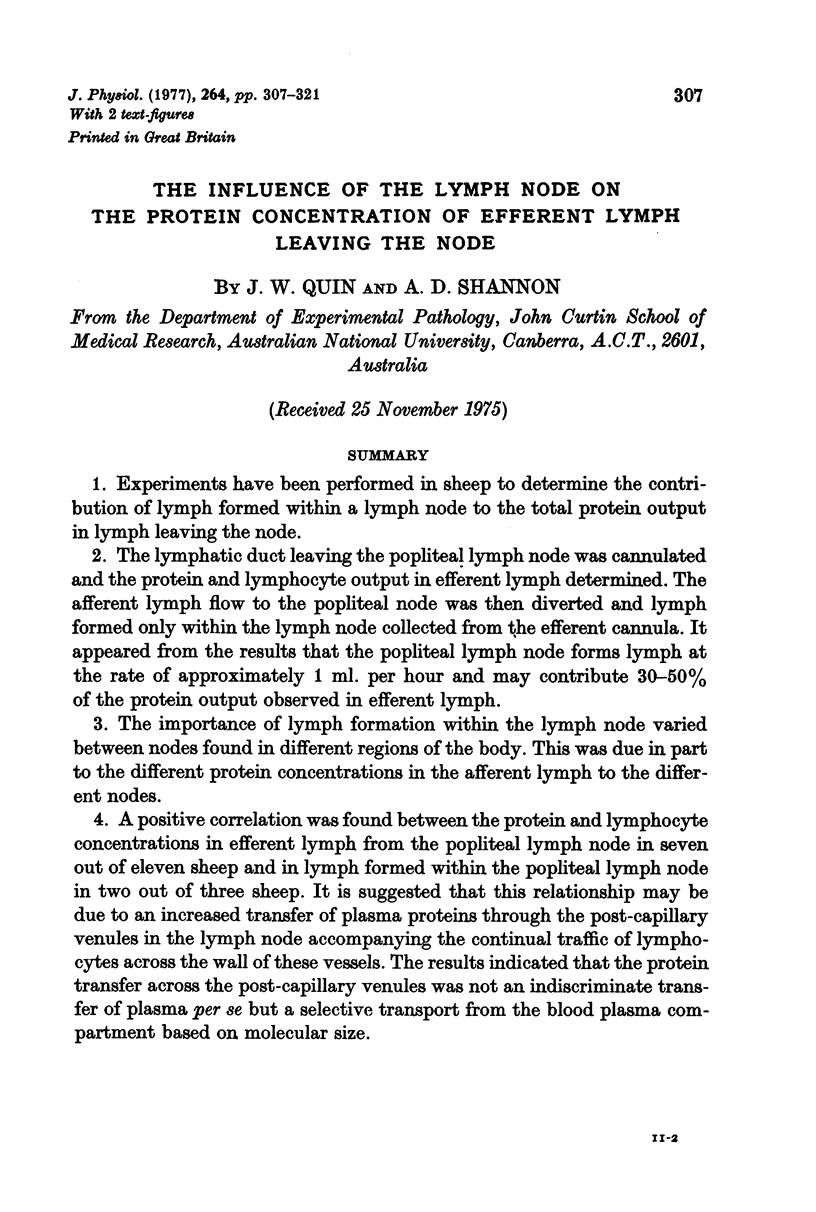
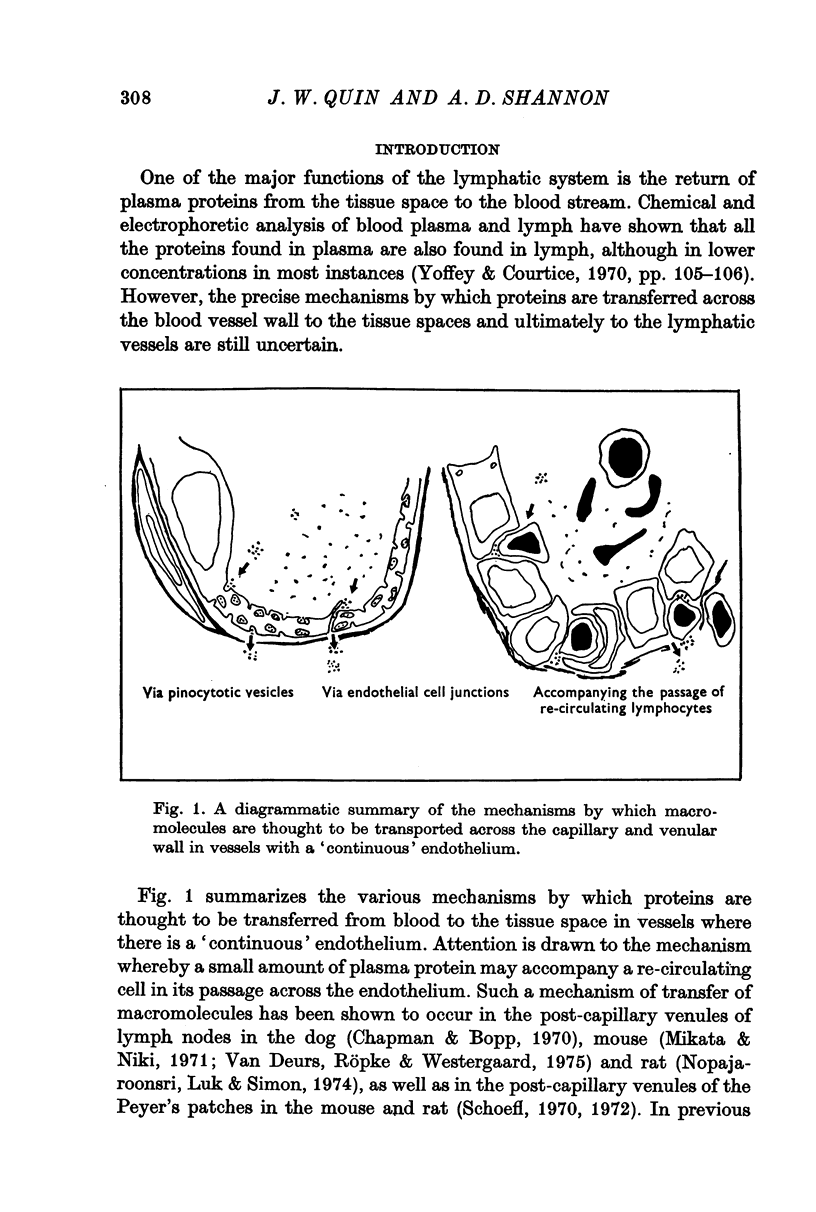
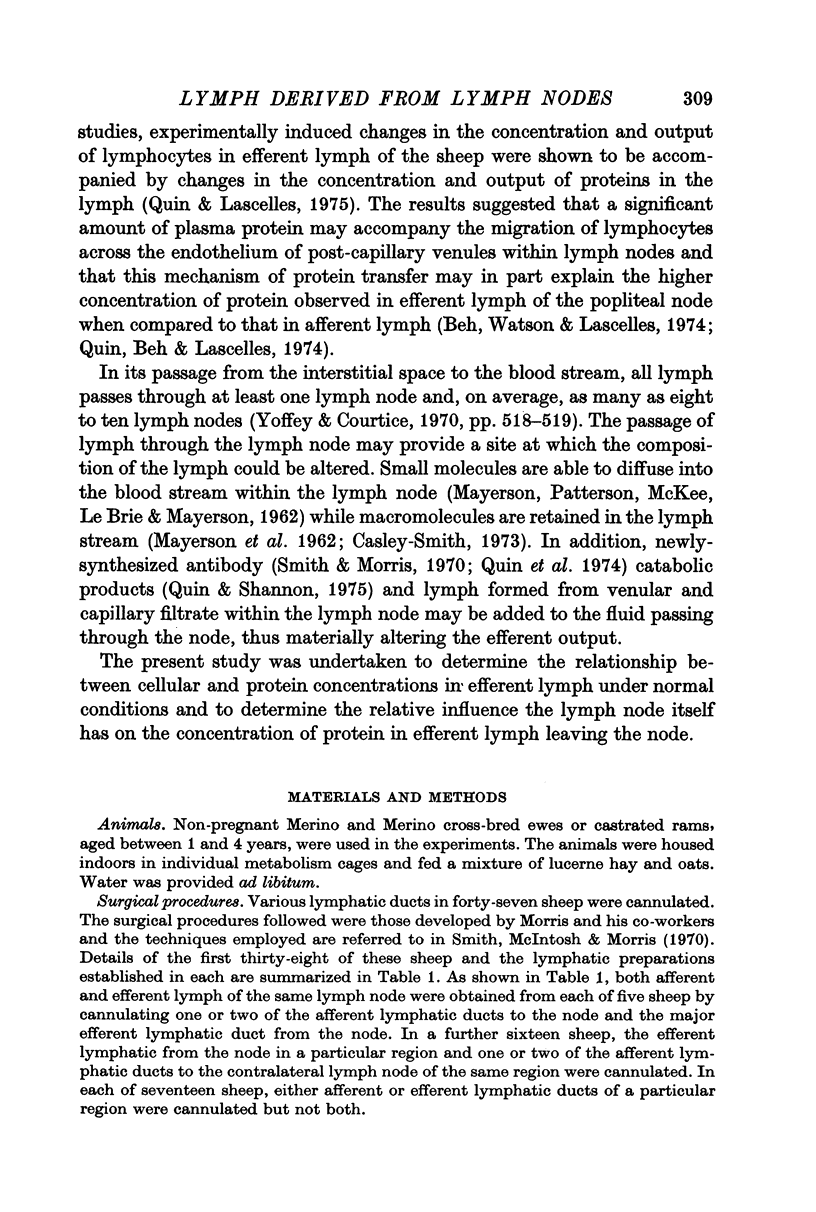
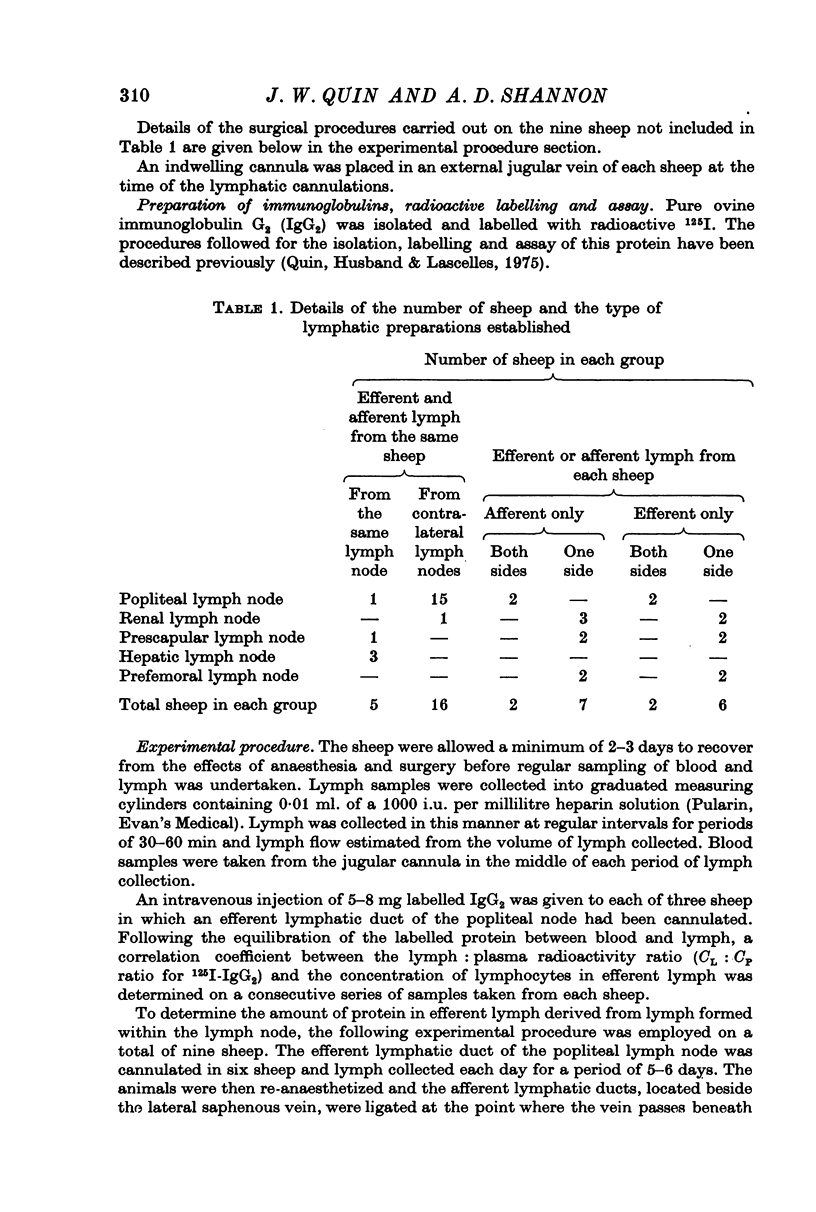
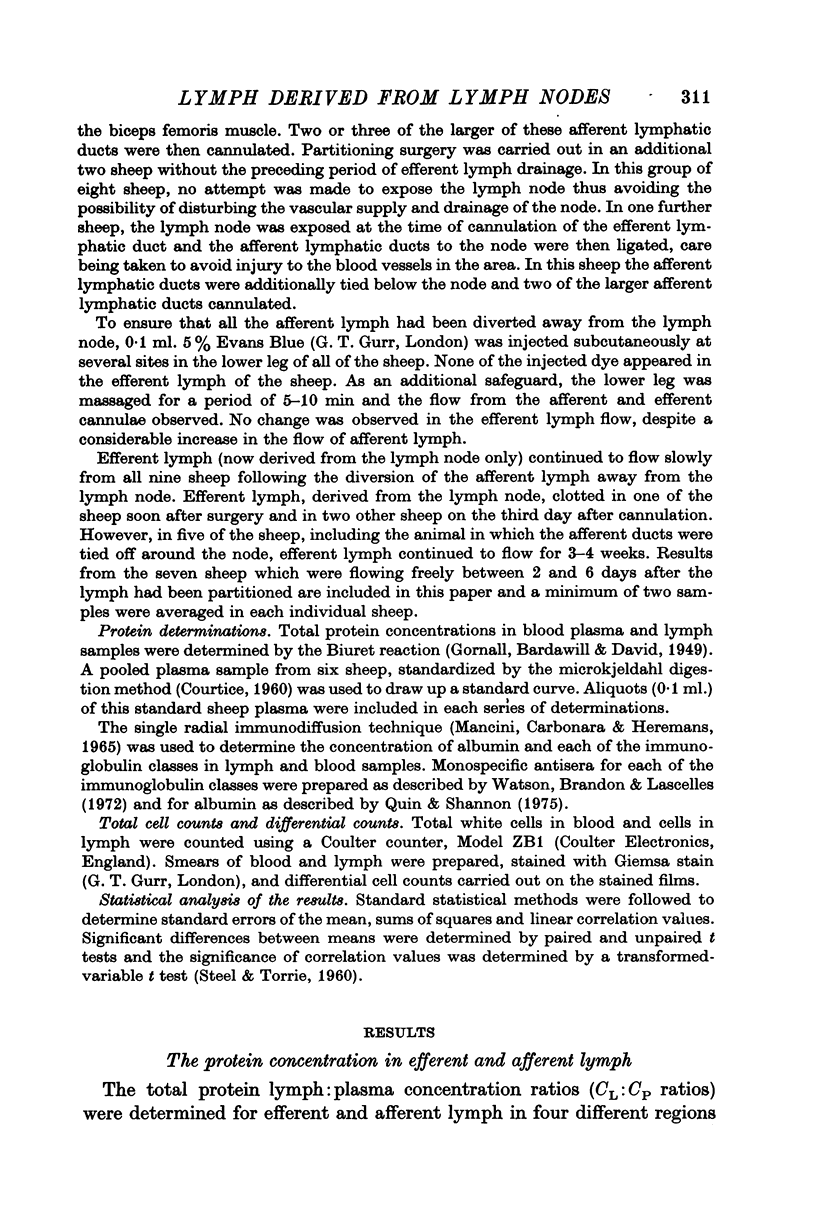
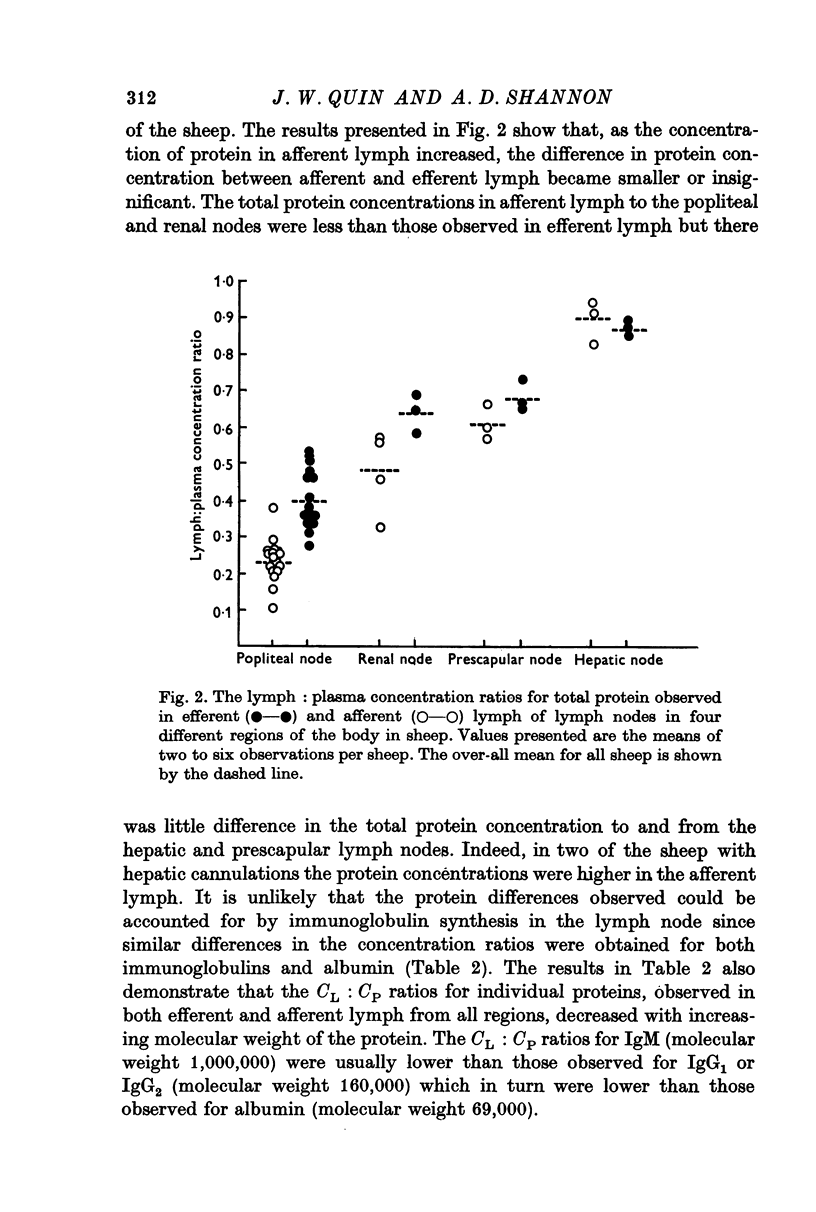
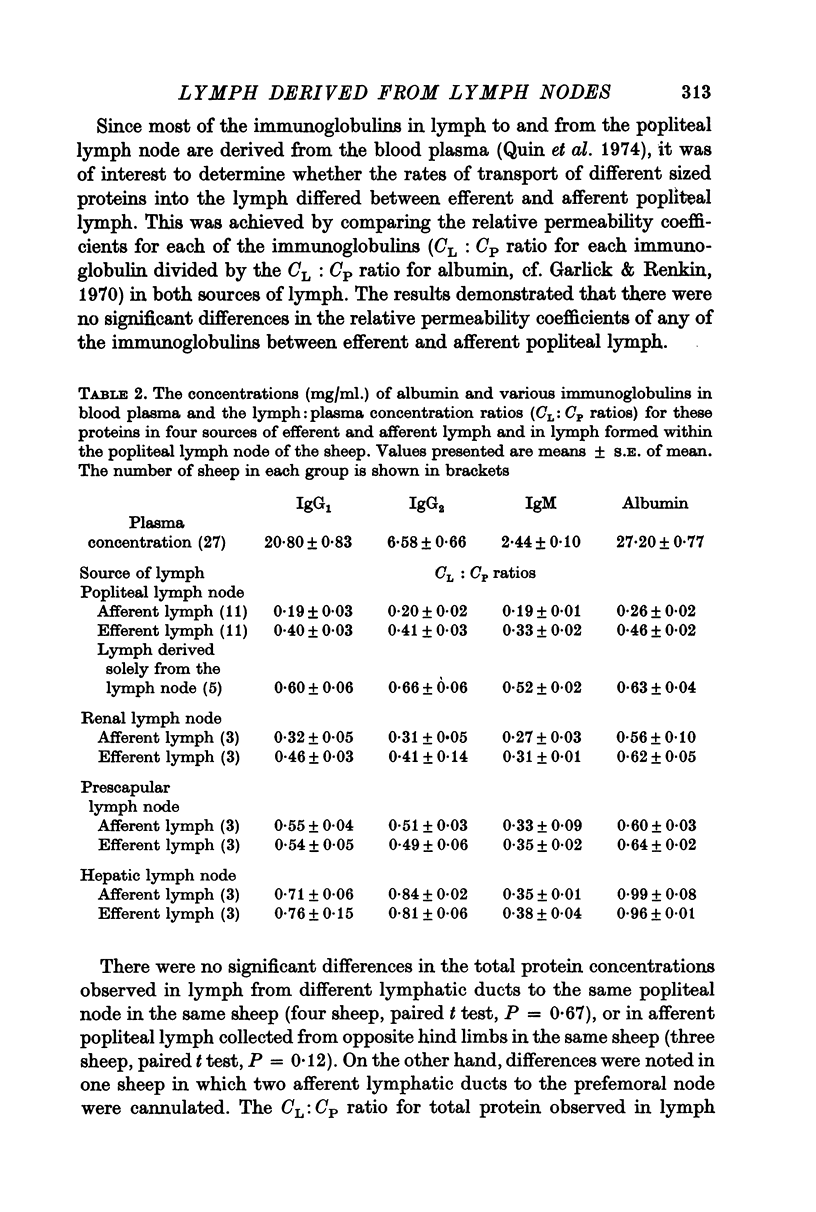
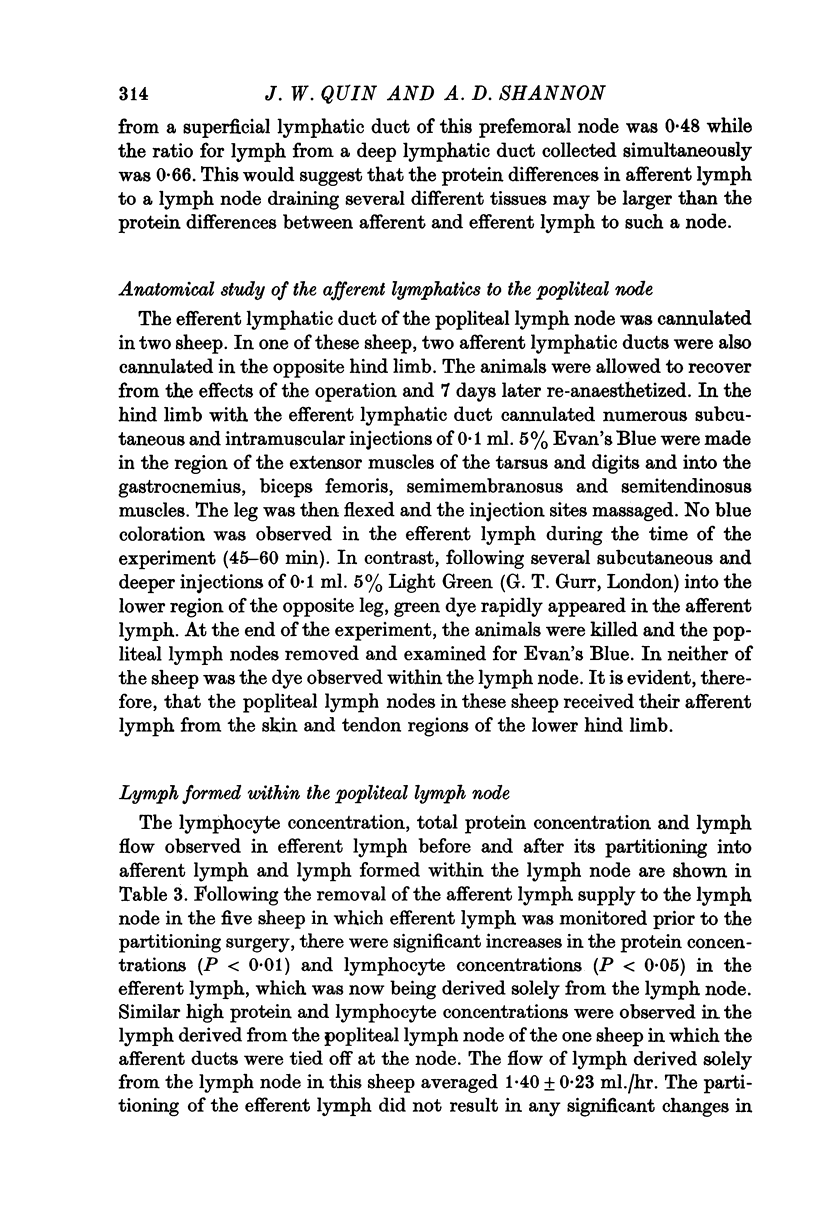
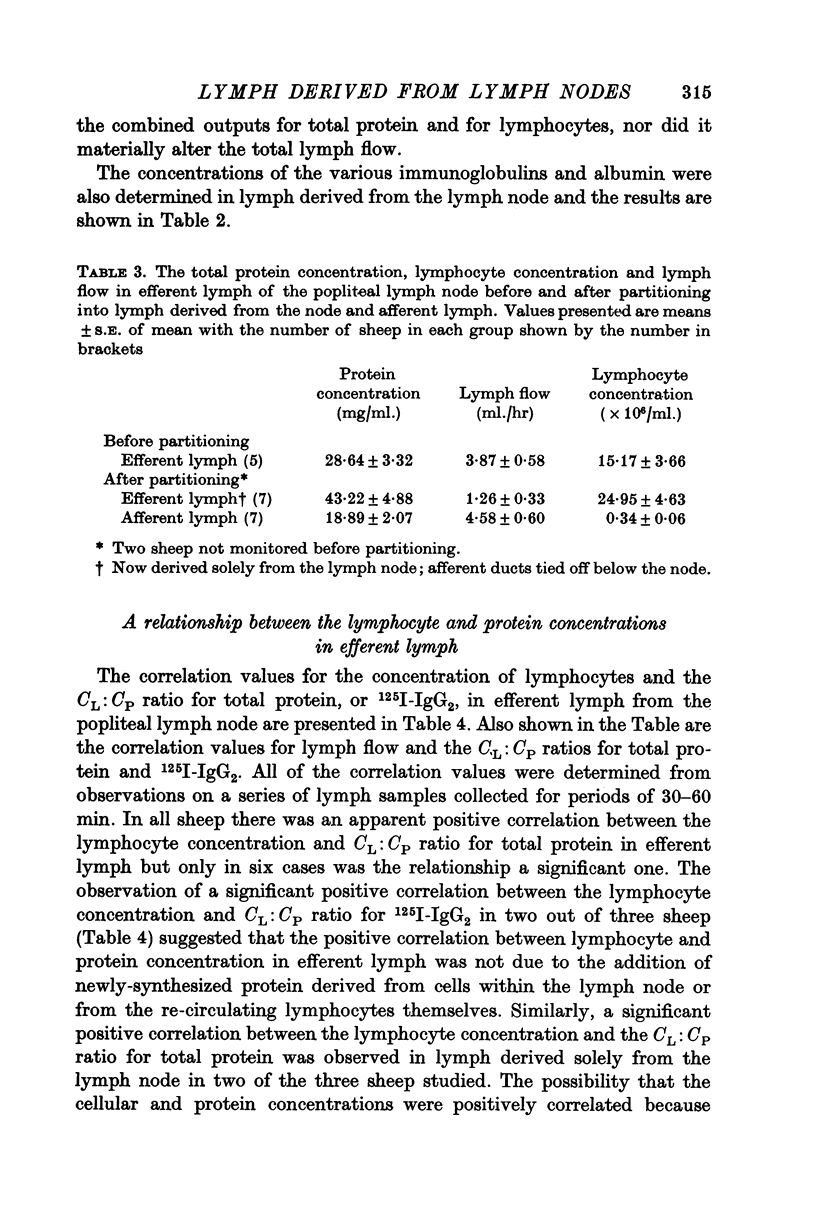
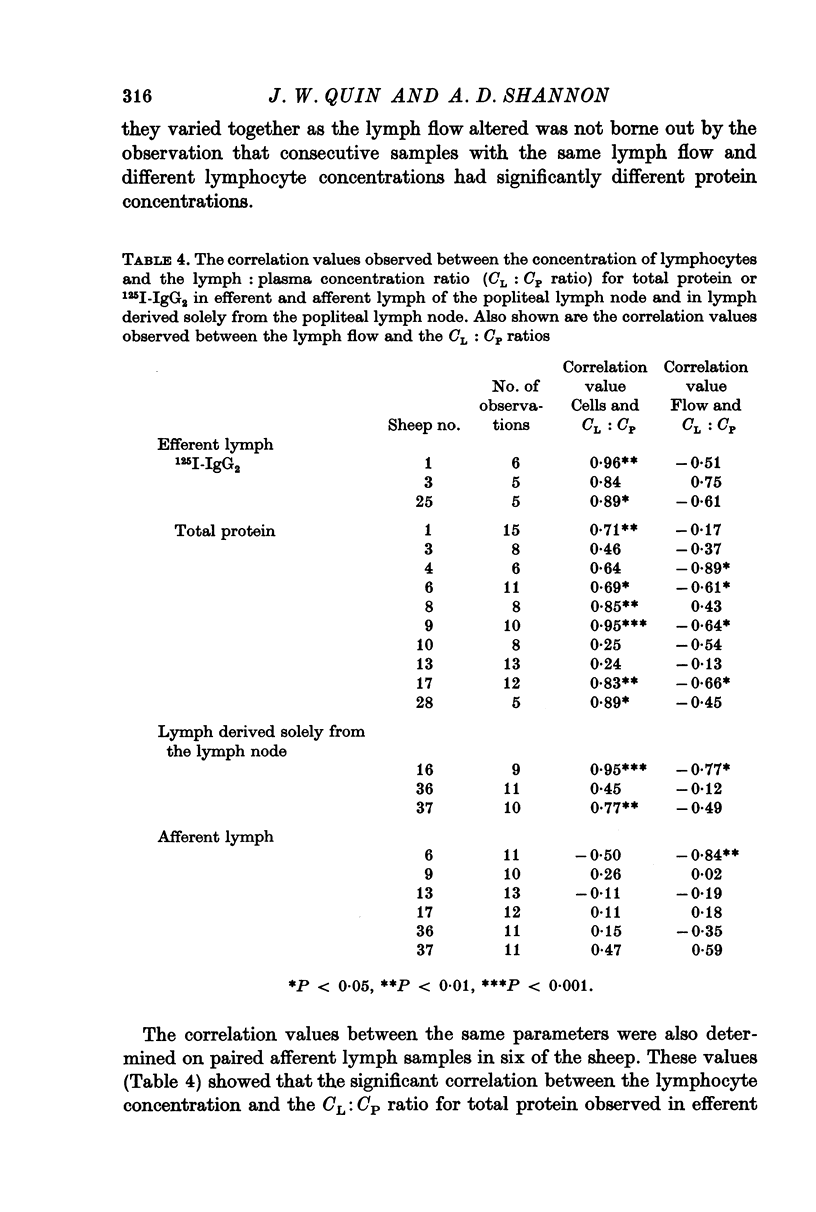
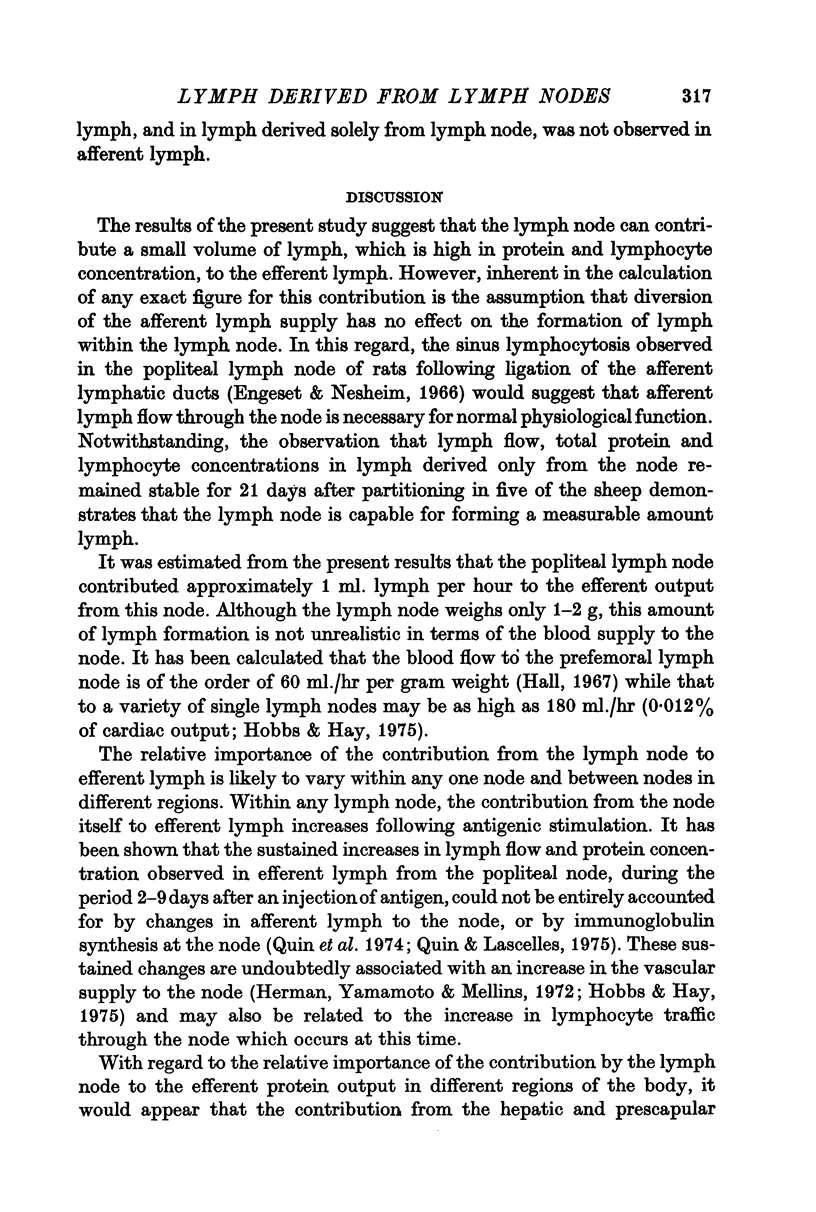
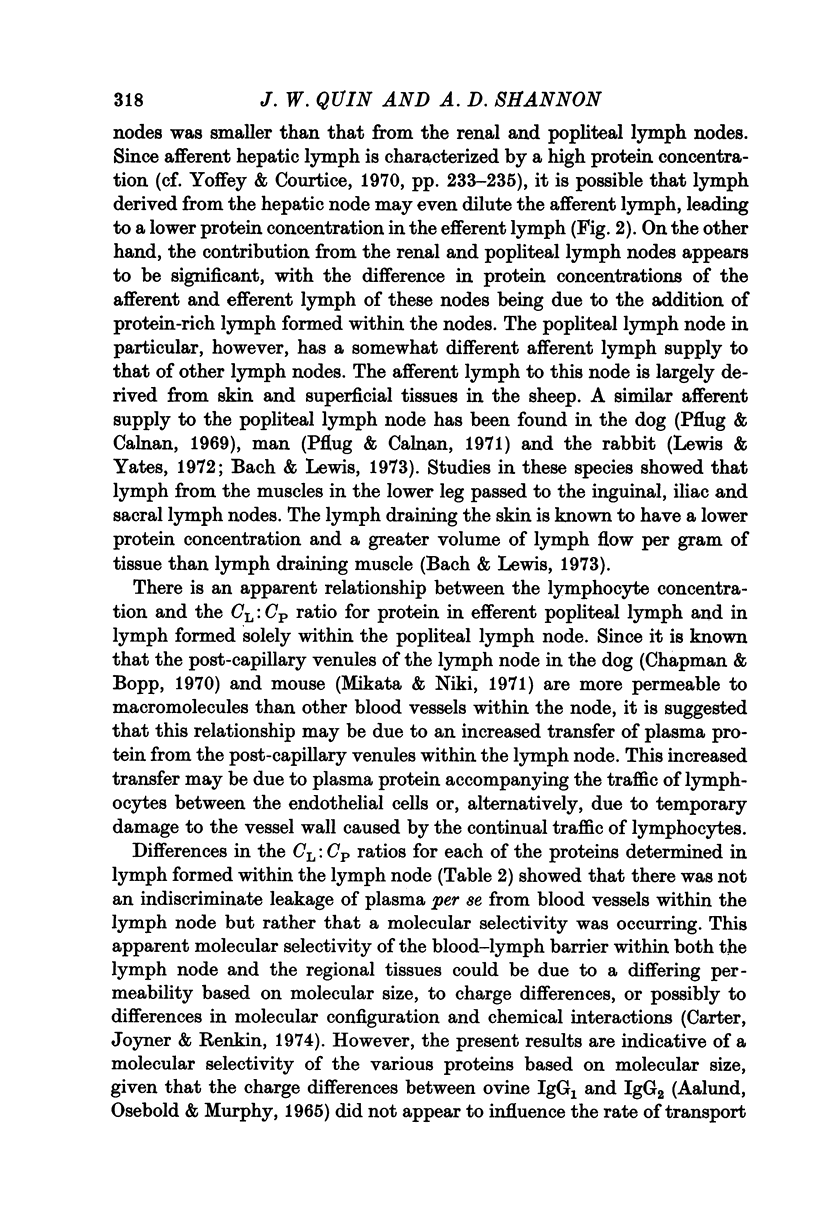
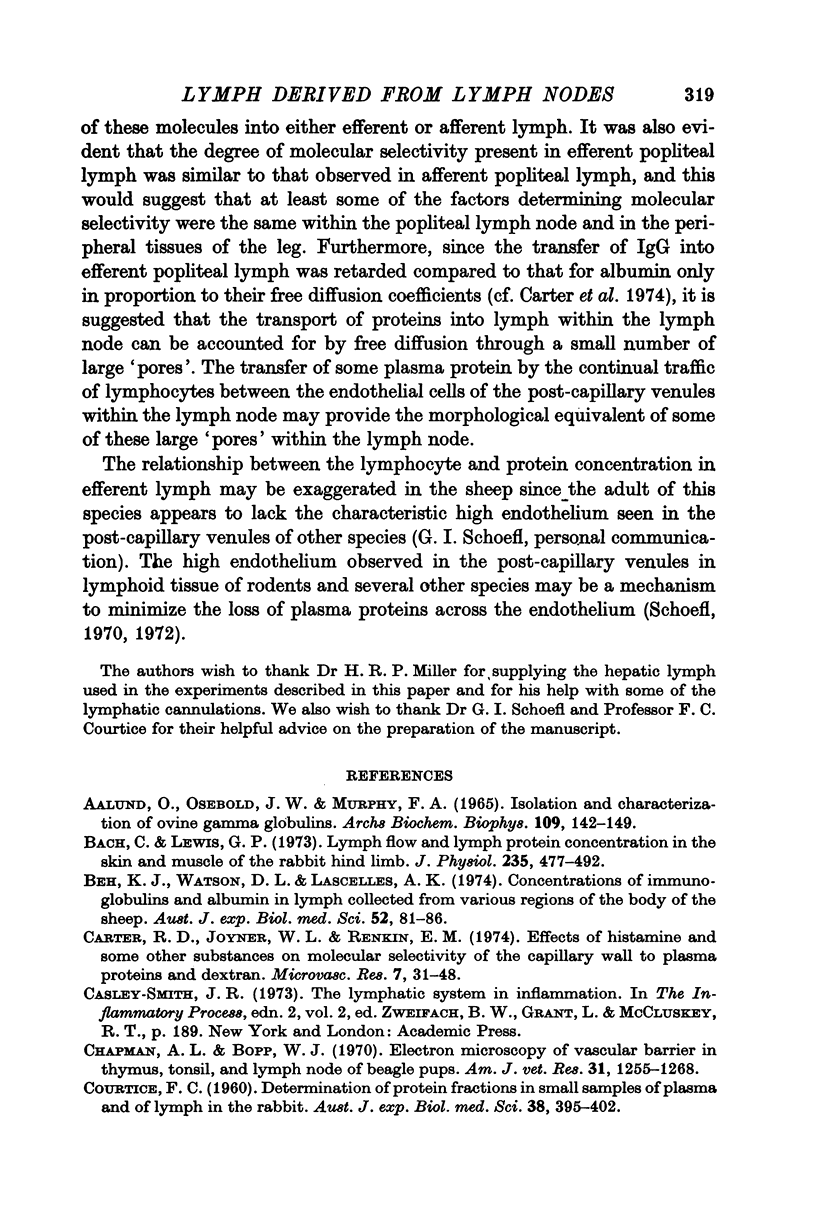
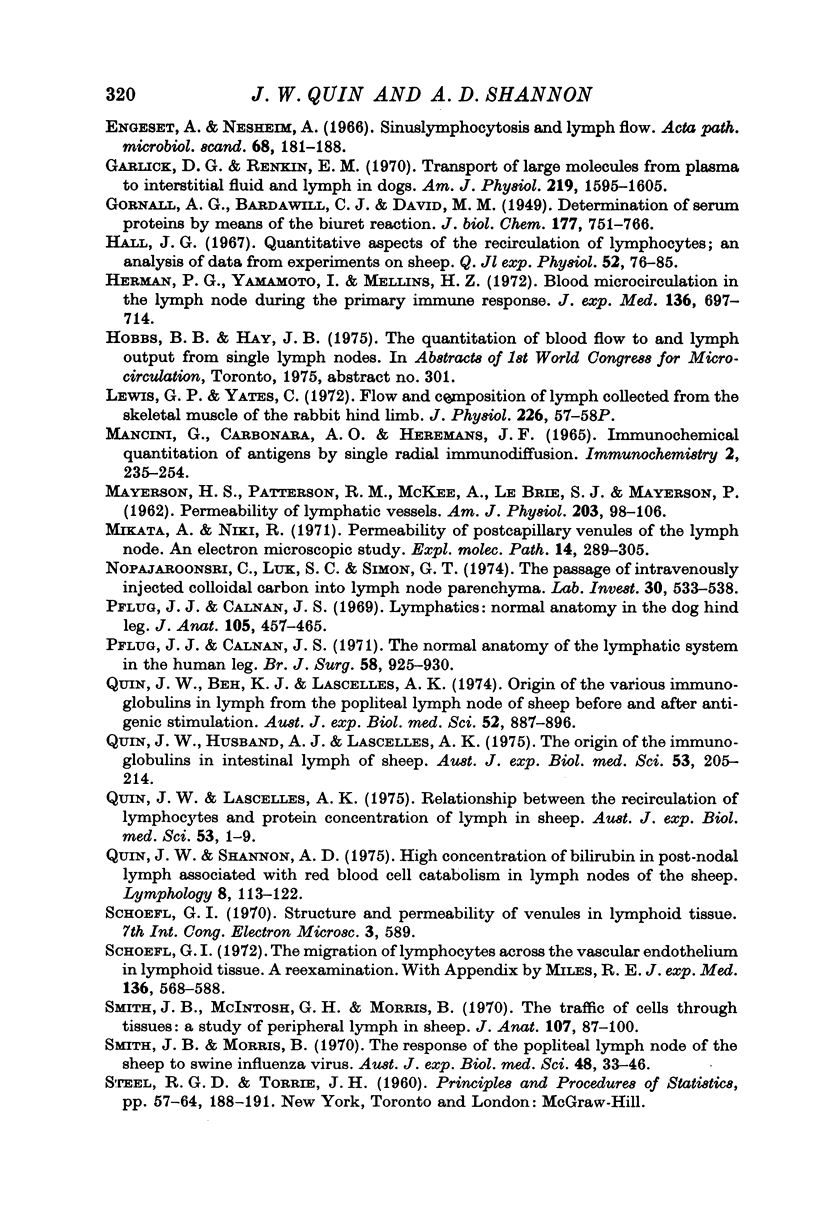
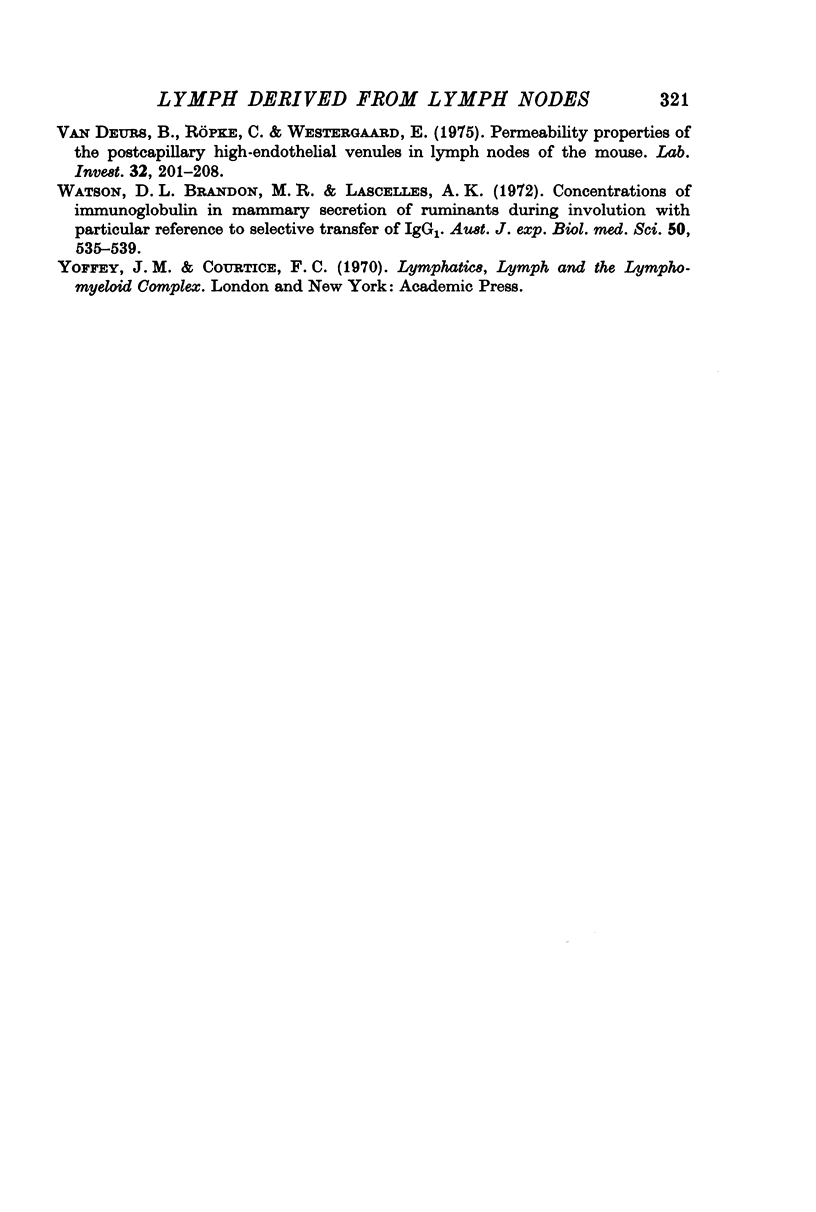
Selected References
These references are in PubMed. This may not be the complete list of references from this article.
- ALUND O., OSEBOLD J. W., MURPHY F. A. ISOLATION AND CHARACTERIZATION OF OVINE GAMMA GLOBULINS. Arch Biochem Biophys. 1965 Jan;109:142–149. doi: 10.1016/0003-9861(65)90299-7. [DOI] [PubMed] [Google Scholar]
- Bach C., Lewis G. P. Lymph flow and lymph protein concentration in the skin and muscle of the rabbit hind limb. J Physiol. 1973 Dec;235(2):477–492. doi: 10.1113/jphysiol.1973.sp010398. [DOI] [PMC free article] [PubMed] [Google Scholar]
- Beh K. J., Watson D. L., Lascelles A. K. Concentrations of immunoglobulins and albumin in lymph collected from various regions of the body of the sheep. Aust J Exp Biol Med Sci. 1974 Feb;52(1):81–86. doi: 10.1038/icb.1974.6. [DOI] [PubMed] [Google Scholar]
- COURTICE F. C. Determination of protein fractions in small samples of plasma and of lymph in the rabbit. Aust J Exp Biol Med Sci. 1960 Oct;38:395–402. doi: 10.1038/icb.1960.42. [DOI] [PubMed] [Google Scholar]
- Carter R. D., Joyner W. L., Renkin E. M. Effects of histamine and some other substances on molecular selectivity of the capillary wall to plasma proteins and dextran. Microvasc Res. 1974 Jan;7(1):31–48. doi: 10.1016/0026-2862(74)90035-1. [DOI] [PubMed] [Google Scholar]
- Chapman A. L., Bopp W. J. Electron microscopy of vascular barrier in thymus, tonsil, and lymph node of beagle pups. Am J Vet Res. 1970 Jul;31(7):1255–1268. [PubMed] [Google Scholar]
- Engeset A., Nesheim A. Sinuslymphocytosis and lymph flow. Acta Pathol Microbiol Scand. 1966;68(2):181–188. doi: 10.1111/apm.1966.68.2.181. [DOI] [PubMed] [Google Scholar]
- Garlick D. G., Renkin E. M. Transport of large molecules from plasma to interstitial fluid and lymph in dogs. Am J Physiol. 1970 Dec;219(6):1595–1605. doi: 10.1152/ajplegacy.1970.219.6.1595. [DOI] [PubMed] [Google Scholar]
- Herman P. G., Yamamoto I., Mellins H. Z. Blood microcirculation in the lymph node during the primary immune response. J Exp Med. 1972 Oct 1;136(4):697–714. doi: 10.1084/jem.136.4.697. [DOI] [PMC free article] [PubMed] [Google Scholar]
- Lewis G. P., Yates C. Flow and composition of lymph collected from the skeletal muscle of the rabbit hind limb. J Physiol. 1972 Oct;226(2):57P–58P. [PubMed] [Google Scholar]
- MAYERSON H. S., PATTERSON R. M., McKEE A., LEBRIE S. J., MAYERSON P. Permeability of lymphatic vessels. Am J Physiol. 1962 Jul;203:98–106. doi: 10.1152/ajplegacy.1962.203.1.98. [DOI] [PubMed] [Google Scholar]
- Mancini G., Carbonara A. O., Heremans J. F. Immunochemical quantitation of antigens by single radial immunodiffusion. Immunochemistry. 1965 Sep;2(3):235–254. doi: 10.1016/0019-2791(65)90004-2. [DOI] [PubMed] [Google Scholar]
- Mikata A., Niki R. Permeability of postcapillary venules of the lymph node. An electron microscopic study. Exp Mol Pathol. 1971 Jun;14(3):289–305. doi: 10.1016/0014-4800(71)90002-5. [DOI] [PubMed] [Google Scholar]
- Nopajaroonsri C., Luk S. C., Simon G. T. The passage of intravenously injected colloidal carbon into lymph node parenchyma. Lab Invest. 1974 Apr;30(4):533–538. [PubMed] [Google Scholar]
- Pflug J. J., Calnan J. S. Lymphatics: normal anatomy in the dog hind leg. J Anat. 1969 Nov;105(Pt 3):457–465. [PMC free article] [PubMed] [Google Scholar]
- Pflug J. J., Calnan J. S. The normal anatomy of the lymphatic system in the human leg. Br J Surg. 1971 Dec;58(12):925–930. doi: 10.1002/bjs.1800581216. [DOI] [PMC free article] [PubMed] [Google Scholar]
- Quin J. W., Beh K. J., Lascelles A. K. Origin of the various immunoglobulins in lymph from the popliteal lymph node of sheep before and after antigenic stimulation. Aust J Exp Biol Med Sci. 1974 Dec;52(6):887–896. doi: 10.1038/icb.1974.88. [DOI] [PubMed] [Google Scholar]
- Quin J. W., Husband A. J., Lascelles A. K. The origin of the immunoglobulins in intestinal lymph of sheep. Aust J Exp Biol Med Sci. 1975 Jun;53(3):205–214. doi: 10.1038/icb.1975.21. [DOI] [PubMed] [Google Scholar]
- Quin J. W., Lascelles A. K. Relationship between the recirculation of lymphocytes and protein concentration of lymph in sheep. Aust J Exp Biol Med Sci. 1975 Feb;53(1):1–9. doi: 10.1038/icb.1975.1. [DOI] [PubMed] [Google Scholar]
- Quin J. W., Shannon A. D. High concentration of bilirubin in post-nodal lymph associated with red blood cell catabolism in lymph nodes of the sheep. Lymphology. 1975 Dec;8(4):113–122. [PubMed] [Google Scholar]
- Schoefl G. I. The migration of lymphocytes across the vascular endothelium in lymphoid tissue. A reexamination. J Exp Med. 1972 Sep 1;136(3):568–588. doi: 10.1084/jem.136.3.568. [DOI] [PMC free article] [PubMed] [Google Scholar]
- Smith J. B., McIntosh G. H., Morris B. The traffic of cells through tissues: a study of peripheral lymph in sheep. J Anat. 1970 Jul;107(Pt 1):87–100. [PMC free article] [PubMed] [Google Scholar]
- Smith J. B., Morris B. The response of the popliteal lymph node of the sheep to swine influenza virus. Aust J Exp Biol Med Sci. 1970 Feb;48(1):33–46. doi: 10.1038/icb.1970.4. [DOI] [PubMed] [Google Scholar]
- Watson D. L., Brandon M. R., Lascelles A. K. Concentrations of immunoglobulin in mammary secretion of ruminants during involution with particular reference to selective transfer of IgG. Aust J Exp Biol Med Sci. 1972 Aug;50(4):535–539. doi: 10.1038/icb.1972.46. [DOI] [PubMed] [Google Scholar]
- van Deurs B., Röpke C., Westergaard E. Permeability properties of the postcapillary high-endothelial venules in lymph nodes of the mouse. Lab Invest. 1975 Feb;32(2):201–208. [PubMed] [Google Scholar]


